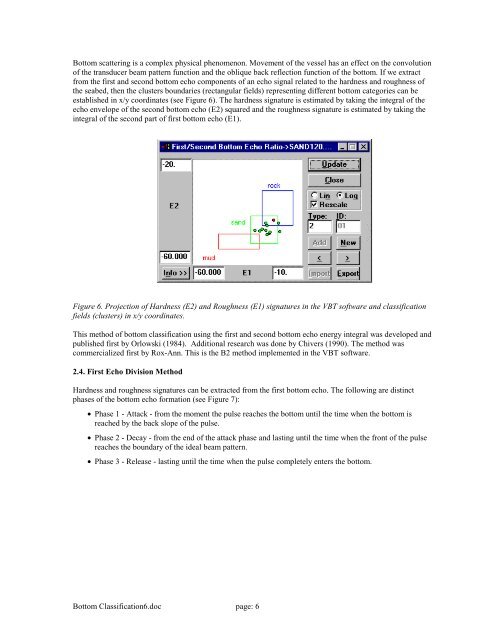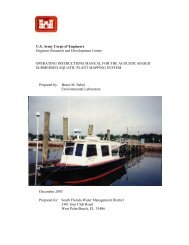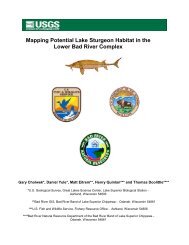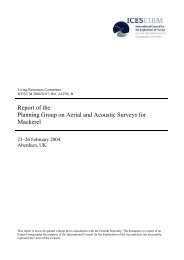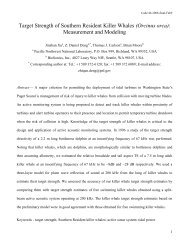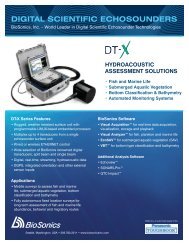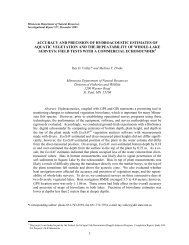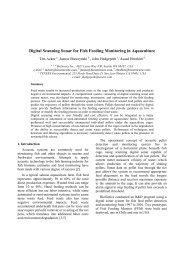Bottom Classification - BioSonics, Inc
Bottom Classification - BioSonics, Inc
Bottom Classification - BioSonics, Inc
You also want an ePaper? Increase the reach of your titles
YUMPU automatically turns print PDFs into web optimized ePapers that Google loves.
<strong>Bottom</strong> scattering is a complex physical phenomenon. Movement of the vessel has an effect on the convolution<br />
of the transducer beam pattern function and the oblique back reflection function of the bottom. If we extract<br />
from the first and second bottom echo components of an echo signal related to the hardness and roughness of<br />
the seabed, then the clusters boundaries (rectangular fields) representing different bottom categories can be<br />
established in x/y coordinates (see Figure 6). The hardness signature is estimated by taking the integral of the<br />
echo envelope of the second bottom echo (E2) squared and the roughness signature is estimated by taking the<br />
integral of the second part of first bottom echo (E1).<br />
Figure 6. Projection of Hardness (E2) and Roughness (E1) signatures in the VBT software and classification<br />
fields (clusters) in x/y coordinates.<br />
This method of bottom classification using the first and second bottom echo energy integral was developed and<br />
published first by Orlowski (1984). Additional research was done by Chivers (1990). The method was<br />
commercialized first by Rox-Ann. This is the B2 method implemented in the VBT software.<br />
2.4. First Echo Division Method<br />
Hardness and roughness signatures can be extracted from the first bottom echo. The following are distinct<br />
phases of the bottom echo formation (see Figure 7):<br />
• Phase 1 - Attack - from the moment the pulse reaches the bottom until the time when the bottom is<br />
reached by the back slope of the pulse.<br />
• Phase 2 - Decay - from the end of the attack phase and lasting until the time when the front of the pulse<br />
reaches the boundary of the ideal beam pattern.<br />
• Phase 3 - Release - lasting until the time when the pulse completely enters the bottom.<br />
<strong>Bottom</strong> <strong>Classification</strong>6.doc page: 6


